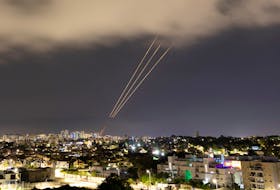I thought a motel dedicated to clowns was odd enough.
Odd and strangely frightening, even.
But another one of Tonopah, Nevada’s tourism claims to fame seemed odder still: “Have you ever seen the Milky Way?”
Because I have seen the Milky Way. Because I see it quite regularly. But that, apparently, isn’t the case for many people.

“Because it’s so far from the bright lights of any major city, Tonopah’s night skies are considered among the best in the country for stargazing,” Tonopah’s tourism literature says. “Tonopah was rated the #1 Stargazing Destination in America by USA Today. With some of the darkest night skies in the nation, you can see over 7,000 stars, including the Milky Way. Just look up! No telescope necessary.”
In most American cities, the literature claims, people can see only 25 to 50 of the brightest of stars.
That is a tragedy. It reminded me of a 2014 article called “Losing the Night” in Nautilus, an article that talked about the huge growth in the amount of fugitive light thrown off by our cities, towns, streetlights and headlights. It’s an amount of light that, with the advent of LED lighting, is expected to grow.
It also made me think about an article I read just last week about the huge growth in the number of commercial low-Earth satellites — some of them that planned to be used for types of sky advertising at some point in the near future. SpaceX plans to eventually launch more than 42,000 satellites to provide worldwide internet coverage, but astronomers say that number, along with Amazon’s proposed 3,000 satellites, and scores of others — could dramatically change the night sky, and not just for astronomy. We’ll be beneath a great working grid of orbiting specks, some of them more reflective than others. And, in as little as a decade, we will be completely rewriting a night sky that has been a constant throughout humanity’s time on Earth.
It will be a true shame, and, I think, a great loss.
I didn’t see the Milky Way in Tonopah — the night sky was actually far too bright there for me.
In as little as a decade, we will be completely rewriting a night sky that has been a constant throughout humanity’s time on Earth.
I’ve seen it far better in darker spots, places that are even further from humanity. In the valley near Soldier’s Meadow in Nevada’s Black Rock Desert, for example; when the velvet night lies over that stretch of ground, and the only ranch in sight across acres of sage scrub shuts down its generators for the night, the stars virtually leap at your eyes. Not the tame single specks that you hunt out to wish on when you get your first glimpse of them — no, these are aggressive stars, hard white and staring, the Milky Way seeming to churn like a soft purple liquid almost on the boil. It is a night sky that is — especially on nights when the moon is absent — almost frightening in its ability to make you feel insignificant in the universe.
You see those stars — and the sky-bruise of the Milky Way — almost as well in Adam’s Cove in Newfoundland’s Conception Bay. In hard winter, the stars are like white glass, even if the horizon to the east never fully slips into darkness, the thumbnail breadth of the lights from the city of St. John’s like a constant fake leading edge of dawn.
We regularly see satellites in Adam’s Cove now, threading overhead along their straight tracks. Airplanes, of course, red and white strobes and soft engine noise, heading from the hubs of the eastern United States to England and Europe.
We are losing great things at a hellish pace.
I wonder if someday, we’ll talk about them, and if those who have never seen them will wonder whether we’re exaggerating or telling the truth.
Russell Wangersky’s column appears in SaltWire publications across Atlantic Canada. He can be reached at [email protected] — Twitter: @wangersky
MORE FROM RUSSELL WANGERSKY









